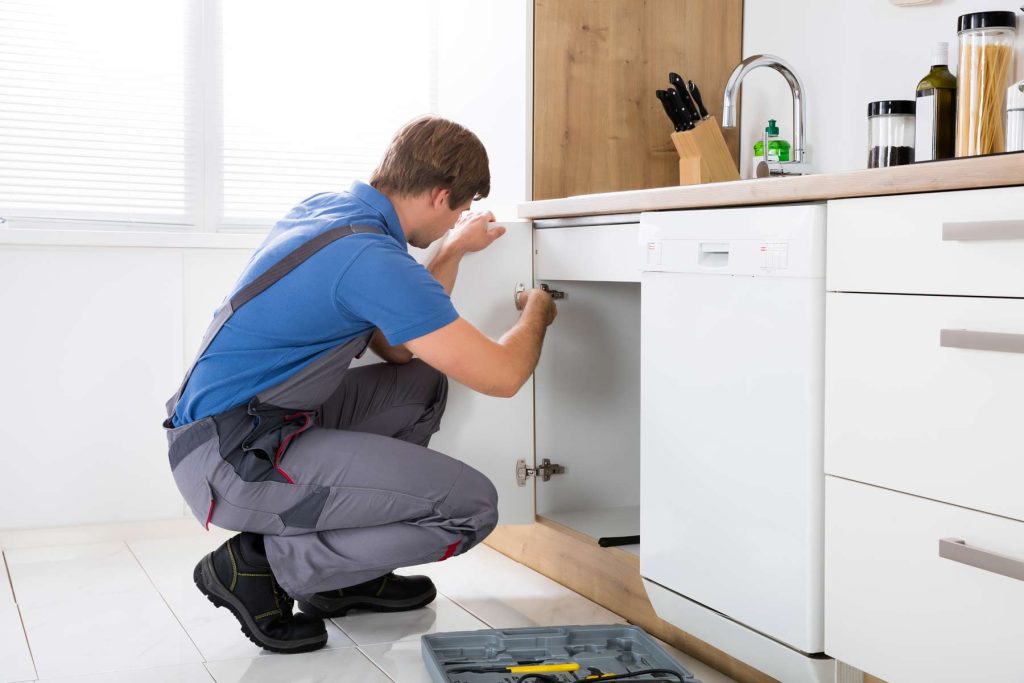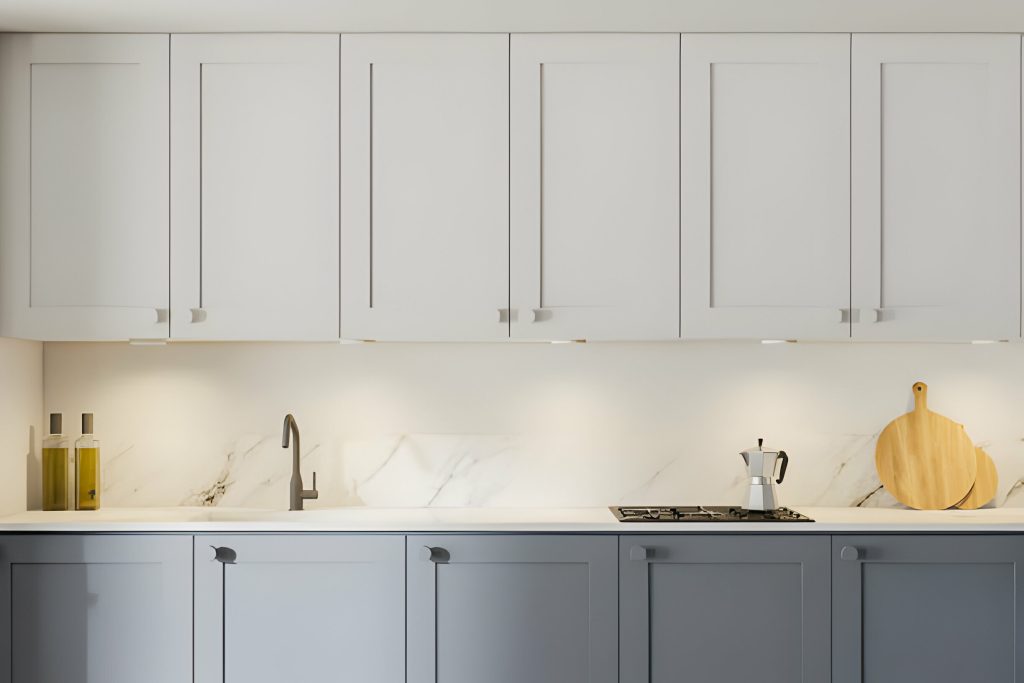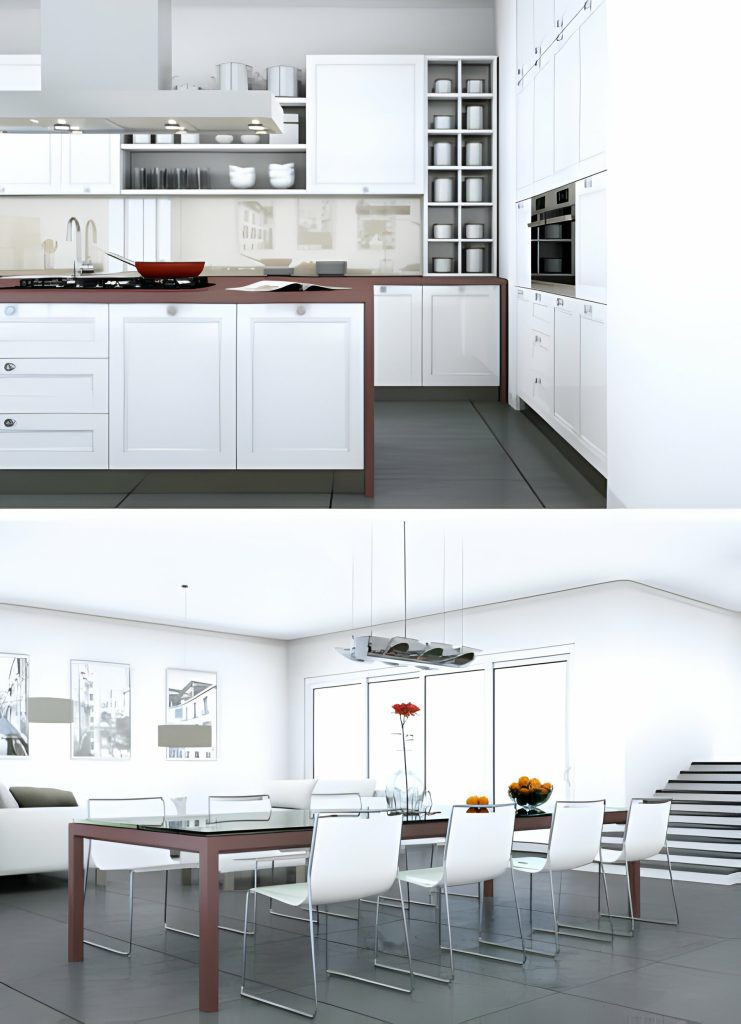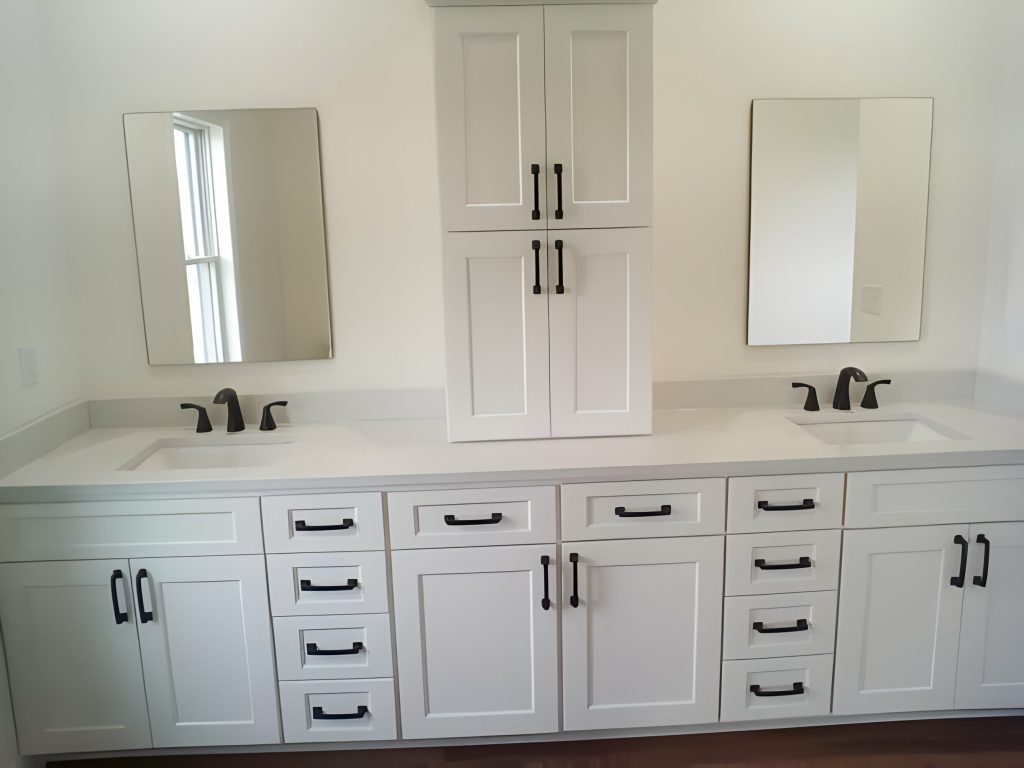Painting thermofoil cabinets is a great way to revitalize their appearance and protect them from future damage. In this article, we’ll guide you through the process step-by-step, providing all the necessary supplies and expert advice along the way. So grab your brushes and let’s transform your cabinets into stunning works of art!
Pros and Cons of Painting Thermofoil Cabinets
If you decide to paint your thermofoil cabinets, it’s important to consider the pros and cons before starting the project. One of the main advantages of painting thermofoil cabinets is that it can help restore their beauty and provide protection against further damage. Additionally, painting your thermofoil cabinets gives you the opportunity to change the color and update the look of your kitchen or bathroom. However, there are also some drawbacks to keep in mind. Thermofoil cabinets have a smooth surface which can make it difficult for paint to adhere properly. It’s important to use the necessary supplies, follow a step-by-step guide, and seek expert advice to ensure you achieve a professional-looking finish.
Necessary Supplies for Painting Thermofoil Cabinets
To paint your thermofoil cabinets, you will need supplies such as primer, paint, painters tape, a paint tray, a foam roller, a foam brush, and a sanding block. Proper surface preparation is key to achieving good results when painting thermofoil cabinets. Start by cleaning the cabinets with a mild detergent to remove any grease or dirt. Use the sanding block to lightly rough up the surface of the cabinets, which helps the primer and paint adhere better. Apply multiple coats of primer using a foam roller and brush, allowing each coat to dry before applying the next one. Choose a high-quality paint that is specifically formulated for use on kitchen cabinets. Apply two coats of paint using the foam roller for smooth coverage. After painting, make sure to properly maintain your painted thermofoil cabinets by regularly cleaning them with gentle soap and water and avoiding abrasive cleaners that can damage the finish.
Step-by-Step Guide to Preparing Thermofoil Cabinets for Painting
Start by removing the hardware and cleaning the surfaces of your thermofoil cabinets with an ammonia-based cleaner. This will ensure that you have a clean and smooth surface to work with when painting. Once the cabinets are clean, there are several steps you can follow to properly prepare them for painting:
- Sanding: Lightly sand the cabinet surfaces to create a rough texture that will help the primer adhere better.
- Priming: Apply a coat or two of primer to seal the surface and provide a good base for the paint.
- Painting: Use a foam roller or brush to apply your chosen paint color. Apply multiple thin coats for an even finish.
- Sealing: To protect your newly painted cabinets, consider applying a clear topcoat or sealer.
Applying Primer to Thermofoil Cabinets
Applying primer is an essential step in preparing thermofoil cabinets for painting. Before you begin, make sure to clean the cabinets thoroughly and remove any hardware. Use a high-quality primer, such as Zinsser 1-2-3 Primer, to ensure proper adhesion of the paint. Apply at least three coats of primer, allowing each coat to dry before applying the next one. This will create a smooth and even base for your paint. Avoid common mistakes like using cheap or low-quality primers that may not provide adequate coverage or durability. When it comes to choosing paint brands, consider using Benjamin Moore Advance Waterborne Interior Alkyd Paint for a durable finish. Additionally, explore alternative finishes like matte or satin if you prefer a non-glossy look. If you’re unsure about DIY painting, consulting professional painters can ensure excellent results on your thermofoil cabinets.
Techniques for Applying Paint to Thermofoil Cabinets
When painting your thermofoil cabinets, it’s important to choose the right type of paint and finish for a durable and visually appealing result. Here are some techniques and considerations to keep in mind:
- Blending Techniques:
- Proper sanding and priming can help blend in peeled areas.
- Caulking seams between cabinets creates a seamless appearance.
- Color Options:
- Consider wall color that complements the cabinets.
- Experiment with different shades for a unique look.
- Durability Considerations:
- Use high-quality paint and finishes for long-lasting results.
- Regular cleaning and maintenance will help preserve the painted surface.
- Cost Effectiveness:
- Painting thermofoil cabinets is a budget-friendly alternative to replacing them entirely.
- DIY painting can save money, but professional painters have expertise in achieving flawless results.
Choosing the Right Paint for Thermofoil Cabinets
To achieve a durable and visually appealing result, it’s important to choose the right type of paint and finish for your thermofoil cabinets. When painting thermofoil cabinets, consider using self-leveling paint like Benjamin Moore Advance or Sherwin Williams ProClassic. These waterborne alkyd paints offer durability and a beautiful finish. Additionally, selecting the right paint sheen is crucial for achieving the desired look. Consider options like matte, satin, or gloss finishes based on your preference. When it comes to color options, you have a wide range to choose from to suit your style and kitchen decor. Durability factors should also be taken into account when choosing paint, as you want it to withstand daily wear and tear in the kitchen environment. Finally, remember that proper maintenance is key to preserving the painted surface of your thermofoil cabinets. Regularly clean them with a mild soap and water solution and avoid using abrasive cleaners that could damage the finish.
Sealing and Protecting Painted Thermofoil Cabinets
After painting, it is important to seal and protect the newly painted thermofoil cabinets. Here are some maintenance tips to achieve durability and a professional finish for your cabinets:
- Apply a clear coat sealer: Use a water-based polyurethane or acrylic sealer to protect the paint from scratches, stains, and moisture.
- Follow proper curing time: Allow the cabinets to fully cure for at least two weeks before placing any objects on them or using harsh cleaning chemicals.
- Avoid abrasive cleaners: Stick to mild soap and water when cleaning your painted thermofoil cabinets to prevent damage to the paint.
- Take before and after photos: Document your cabinet transformation with photos so you can appreciate the difference and track any changes over time.
Tips for Reattaching and Installing Painted Thermofoil Cabinets
To reattach and install your newly painted thermofoil cabinets, you can simply replace the hardware and secure them back in their original places. Before reinstalling the cabinets, it’s important to consider a few installation tips. Make sure to measure and mark the placement of the cabinets accurately, ensuring they are level and securely attached to the wall. Use appropriate screws or brackets to provide proper support. When it comes to painting techniques, remember to follow the steps for preparing and painting thermofoil cabinets that were discussed earlier. Choose a high-quality paint that is suitable for thermofoil surfaces and consider using a primer for better adhesion. Lastly, once your cabinets are reattached, make sure to follow maintenance tips such as cleaning them regularly with mild soap and water, avoiding abrasive cleaners or scrub brushes that could damage the paint finish.
Expert Advice: Should You Hire a Professional to Paint Thermofoil Cabinets
If you’re unsure about painting your thermofoil cabinets yourself, it might be worth considering hiring a professional for expert advice and assistance. Painting thermofoil cabinets can be a challenging task, especially due to their smooth surface. However, there are certain advantages to hiring a professional:
- Expertise: Professionals have the knowledge and experience to properly prepare and paint thermofoil cabinets, ensuring a high-quality finish.
- Cost-effectiveness: While DIY may seem more cost-effective initially, mistakes can lead to additional expenses in the long run. Hiring a professional can help avoid costly errors.
- Common Mistakes: Common mistakes when painting thermofoil cabinets include improper surface preparation, using the wrong type of paint or primer, and not allowing sufficient drying time between coats.
Alternatively, if you’re confident in your DIY skills and want to save money, there are alternative options such as using peel-and-stick vinyl wraps or replacing the cabinet doors altogether. Ultimately, the decision boils down to your comfort level and desired outcome.
Achieving a Professional-Looking Finish on Thermofoil Cabinets
Achieving a professional-looking finish on thermofoil cabinets requires proper surface preparation and using high-quality paint and primer. When it comes to painting techniques, it is important to follow the steps of cleaning, sanding, priming, and applying multiple coats of paint. This will ensure that the cabinets have a smooth and even finish. As for color options, there are endless possibilities to choose from, allowing you to customize your cabinets to match your desired aesthetic. Durability factors should also be considered when selecting paint for thermofoil cabinets. Opting for waterborne alkyd paints or self-leveling paints can provide a durable and long-lasting finish. Cost considerations may include the price of high-quality materials and any additional tools or equipment needed for the project. Alternatively, if painting seems too challenging or time-consuming, there are alternative solutions such as cabinet refacing or replacing the cabinet doors altogether.
| Painting Techniques | Color Options | Durability Factors | Cost Considerations |
|---|---|---|---|
| Proper surface preparation including cleaning and sanding | Endless possibilities for customization | Waterborne alkyd paints offer durability | Consider cost of high-quality materials |
| Apply multiple coats of high-quality paint | Choose colors that match desired aesthetic | Self-leveling paints provide a smooth finish | Additional tools or equipment may be needed |
| Follow step-by-step instructions for best results | Consider contrasting colors for visual interest | Proper priming ensures adhesion | Alternative solutions like cabinet refacing |
Long-Term Maintenance of Painted Thermofoil Cabinets
Maintaining painted thermofoil cabinets requires regular cleaning and occasional touch-ups to ensure their long-term durability. To keep your cabinets looking their best, consider the following maintenance tips:
- Cleaning Techniques:
- Use a mild soap and water solution or a non-abrasive cleaner to remove dirt and grease.
- Avoid harsh chemicals or abrasive scrub brushes that can damage the paint finish.
- Dry the cabinets thoroughly after cleaning to prevent moisture buildup.
- Touch-up Options:
- Keep extra paint on hand for minor touch-ups.
- Use a small brush to carefully apply paint in thin layers, blending it with the existing finish.
- Allow each coat of touch-up paint to dry completely before applying another layer.
- Alternative Solutions:
- Consider using peel-and-stick wallpaper or adhesive vinyl wraps as an alternative to painting.
- These options provide a quick and easy way to change the look of your thermofoil cabinets without the need for paint.



